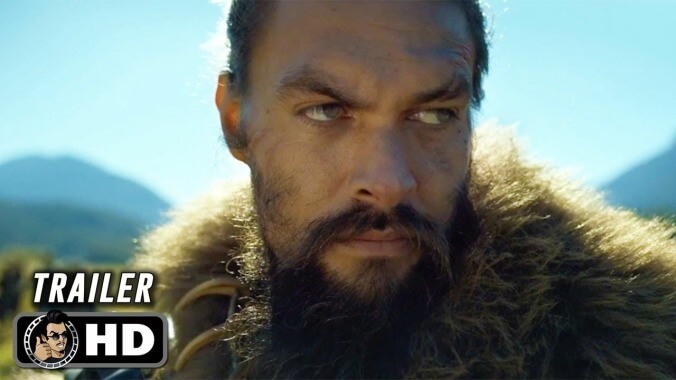Now we know what to call Apple’s TV service, even if we don’t know how much it’ll cost

The latest Apple keynote, presented today on its Cupertino, California homebase, was all about services. As sales of the tech giant’s devices slow, it’s seeking ways to make money through the things you can use those devices for: Onstage at a theater named for his predecessor, Apple CEO Tim Cook unveiled the company’s forays into credit cards and subscriptions for digital magazines (built on Texture, an app it acquired in 2018) and video games. But the portion of the program that made headlines in the days before, that had kept Hollywood guessing for the past four years, were the first official details of an Apple-branded streaming service. The showbiz focus fed into the keynote’s animated introduction, which ran familiar Apple imagery through a Saul Bass lens, including a callback to the first time Steve Jobs threw a sledgehammer through the TV: The Ridley Scott directed, 1984-inspired Super Bowl ad that debuted two days before the first Macintosh PCs came to market.
As previously speculated, what was announced wasn’t so much a potential Netflix killer as a Silicon Valley spin on a skinny bundle, those a la carte offerings designed to give viewers a greater choice over which television channels they pay for. Netflix won’t be one of the offerings that will run in the soon-to-be-updated Apple TV app, but two of its biggest streaming competitors, Hulu and Amazon Prime Video, are, along with more traditional cord-cutting lures like premium-cable channels and live sports.
And they’ll also have access to Apple TV+, the stable of original programs and movies that finally has a name (one that sounds an awful lot like other factions in the coming streaming wars). Former Sony execs Jamie Erlicht and Zack Van Amburg were on hand introduce the projects that Apple TV+ has commissioned under their watch, as were many of those project’s stars and producers. Steven Spielberg hyped the now-Bryan Fuller-less Amazing Stories by touting the brand’s history in genre storytelling (glossing over the fact that he brought it back before, for NBC in the 1980s); Kumail Nanjiani introduced another anthology series on the Apple TV+ slate—the based-on-true-immigration-stories Little America—by way of a mini-stand-up routine about his experiences emigrating from Pakistan to Iowa during college. Jennifer Aniston and Reese Witherspoon’s morning-show comedy has a name now, too—The Morning Show—and Jason Momoa and Alfre Woodard asked the audience to close their eyes to imagine the world of See, set in a far-off future when humankind has collectively lost its sense of sight.
But coming at a point in the presentation when no footage from the Apple TV+ lineup had been shown, that request felt a bit like a cruel tease. When Sara Bareilles sat down at a piano to play the theme song for her collaboration with JJ Abrams, Little Voice, it meant hearing an Apple TV show before ever seeing what one might look like. Skepticism about a lack of clips briefly subsided during an appearance by Big Bird (please don’t mind the voice of the Sesame Street fixture’s new performer, Matt Vogel), while Oprah Winfrey closed the Apple TV+ portion of the program with extremely Oprah Winfrey-like words of inspiration and mentions of a streaming spin-off of Oprah’s Book Club and two documentaries: One “exploring the toll of sexual harassment, assault, and violation in the workplace,” and another on mental health.
Eventually, a sizzle reel rolled, finding Aniston behind the Morning Show desk and Jason Momoa reunited onscreen with big-ass weaponry. Some of the most intriguing clips came from shows that hadn’t been represented on stage: A Soviet moon landing from Ronald D. Moore’s space-race “What if?” For All Mankind, some positively wild-looking period-comedy stuff from Hailee Steinfeld and friends in Dickinson, a concerned Octavia Spencer and a giddy Aaron Paul in the true-crime adaptation Are You Sleeping?, and The Florida Project’s Brooklynn Prince as the pint-sized journalist Hilde Lysiak.
Perhaps fitting for a service whose entire development has been shrouded in mystery, the Apple TV portion of the keynote raised almost as many questions as it answered. Will the updated TV app eventually make its way to non-Apple-branded screens? Yes, beginning with Samsung smart TVs this spring. Will full seasons of TV+ originals drop all at one time, or will they be doled out weekly? Harder to say. And what’s this all going to cost? That wasn’t part of the conversation, either. Apple’s spent $1 billion on this initial slate—surely it’s not going to be giving its wares away for free.
As Apple moves from developing the software and hardware that allows you to consume media and into the act of actually producing that media, it does so with decades of experience in showbiz razzle dazzle; its presentations from Cupertino have become events as anticipated as blockbuster openings and series premieres. Keynotes like today’s are an evolution of that first Mac ad, with plenty of flash and huge names behind the scenes. But unlike that legendary dystopian display, we’ll have to wait a bit to find out if its about to put something on our screens worth paying attention to.